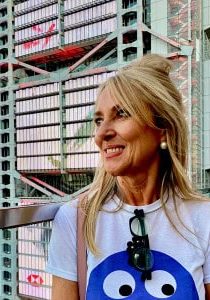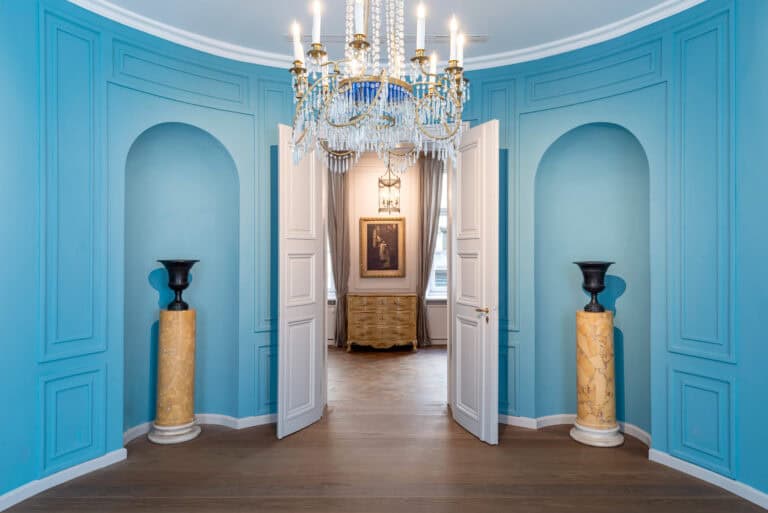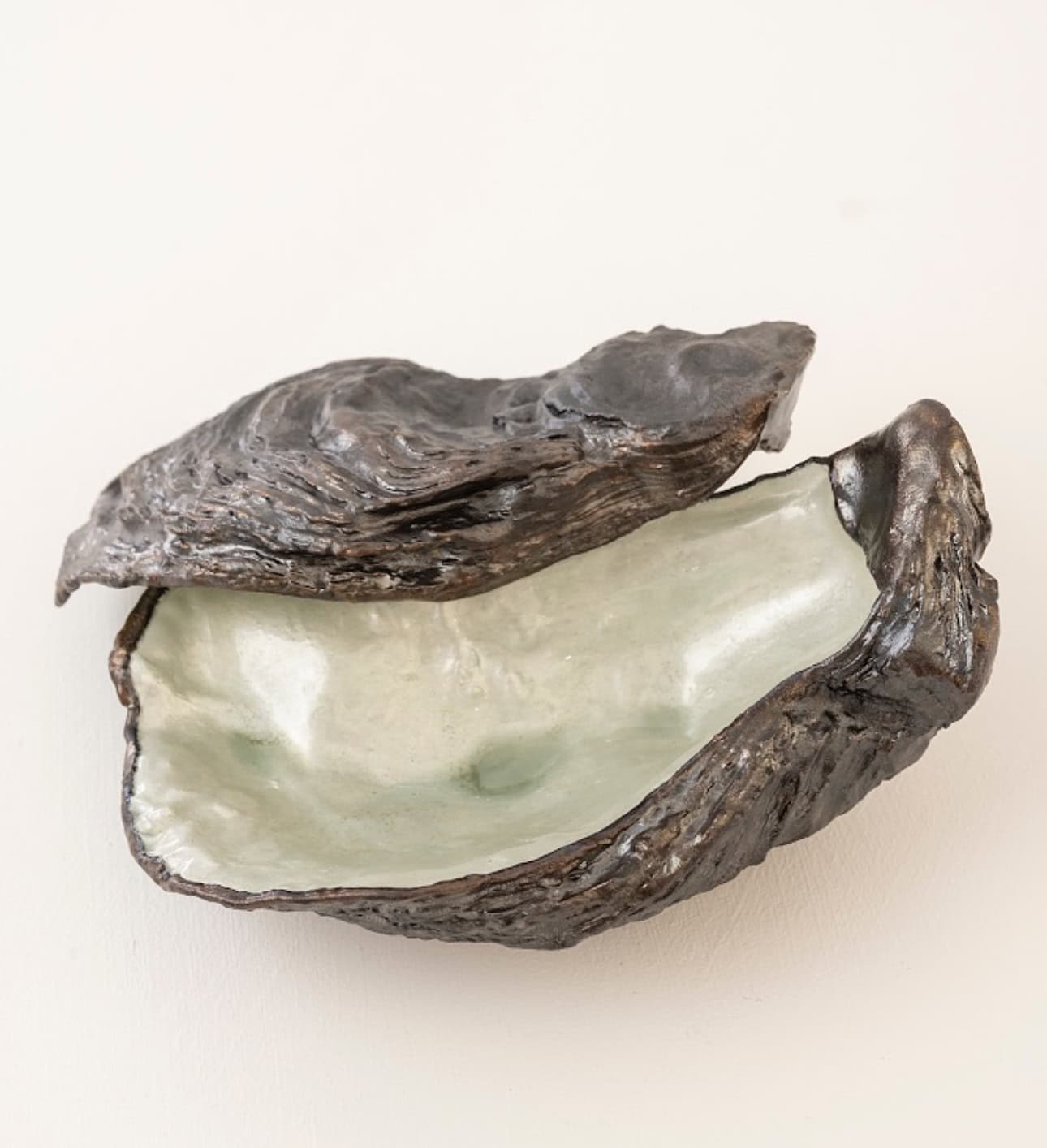
EMMA WITTER: THE MOON’S DAUGHTER IS A PEARL
Anji Connell
Named after a poem by Anna Souter. This exhibition marks the inaugural solo show of London-based Emma Witter, at Gallery FUMI.
Showcasing Emma Witter’s stunning new creations centering on oyster shells collected from market waste. Emma reimagines these shells, remnants of nature, myth, and creativity. Transforming them beautifully in metal, with copper sulfate, water, and electricity in a modern alchemy. Hand-painted and adorned with sparkling minerals, their interiors gleam like hidden relics. Brought back to life, in a wonderfully delicate and tactile experience. That navigates the realms of the celestial and the natural, the forgotten and the rediscovered.
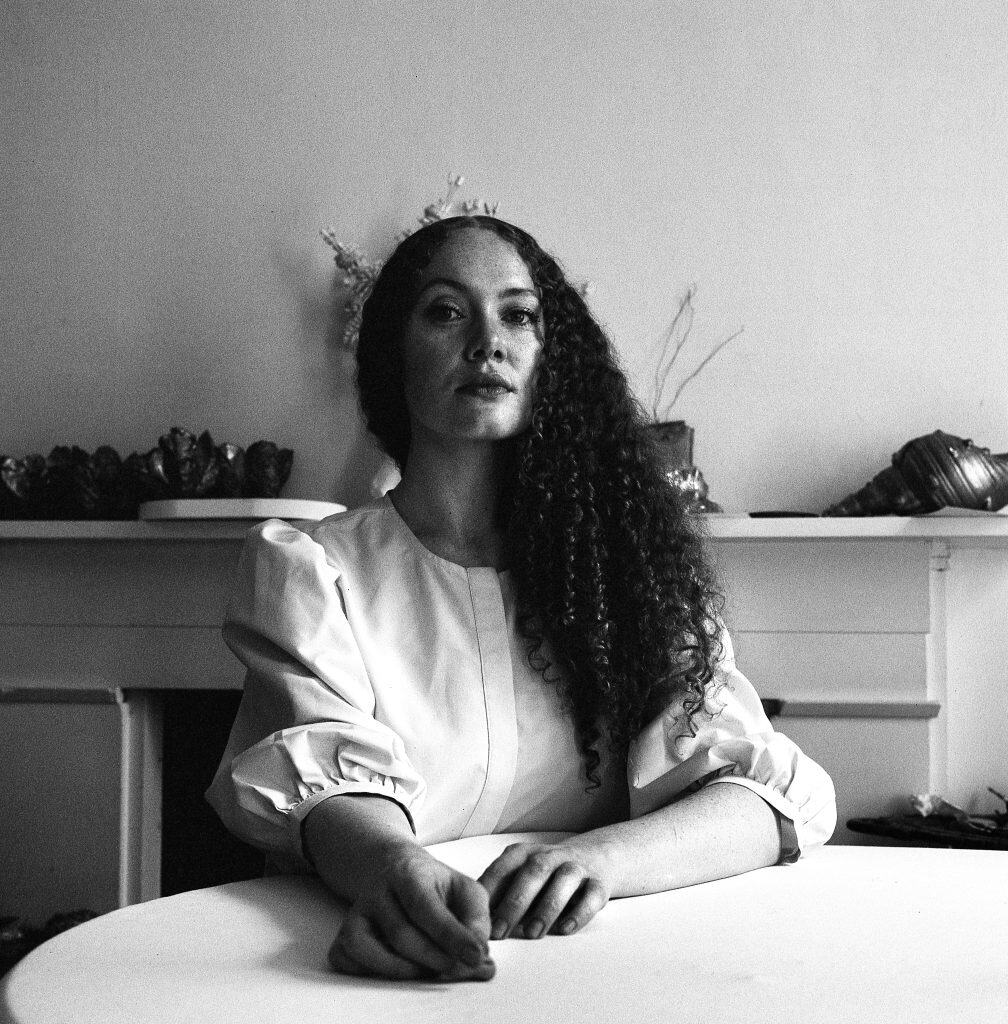
Emma Witter’s creations are a testament to collaboration, from cultivated relationships with farmers, butchers, market vendors, antique dealers, and artisans. Interwoven within these works are narratives that transcend mere objets d’art. Telling broader human stories of agriculture, craftsmanship, and trade. Celebrating lives’ profound interconnectedness and shared endeavours.
Can you give me a review of your practice, and how it started?
Emma Witter: My practice really grew out of an interest in storytelling and world building. I studied performance design initially. Focussing on scenography and I think that theatricality still lingers in the way I approach sculpture and space. Using objects as props or to tell stories, suggest moods, or as prompts to invite the viewer to speculate.
What inspires your choice of materials in your artwork, and how do you perceive their emotional significance?
Emma Witter: For me, both copper and salvaged materials like bones and oyster shells, are sensual materials. They’re about transformation and memory. Shells are remnants of something once living, fragile yet strong. Copper is conductive, warm, even bodily—it oxidises like skin, it changes and reacts over time. When I pair them, I’m thinking about love as something both beautiful and painful, enduring and ephemeral. There’s longing in the materials themselves, and I’m trying to let that speak.
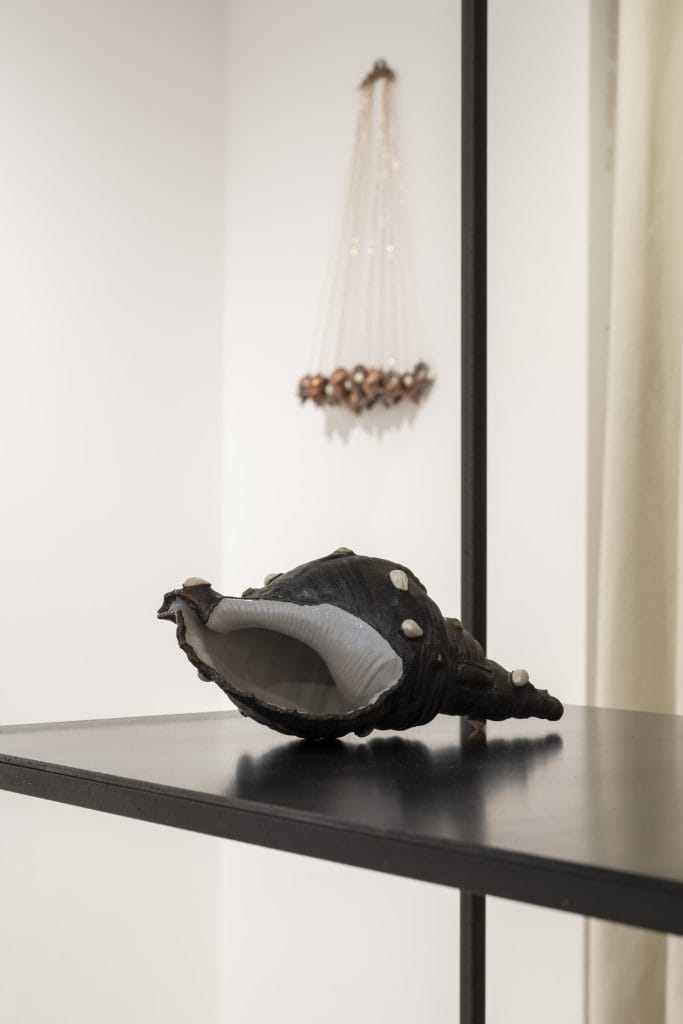
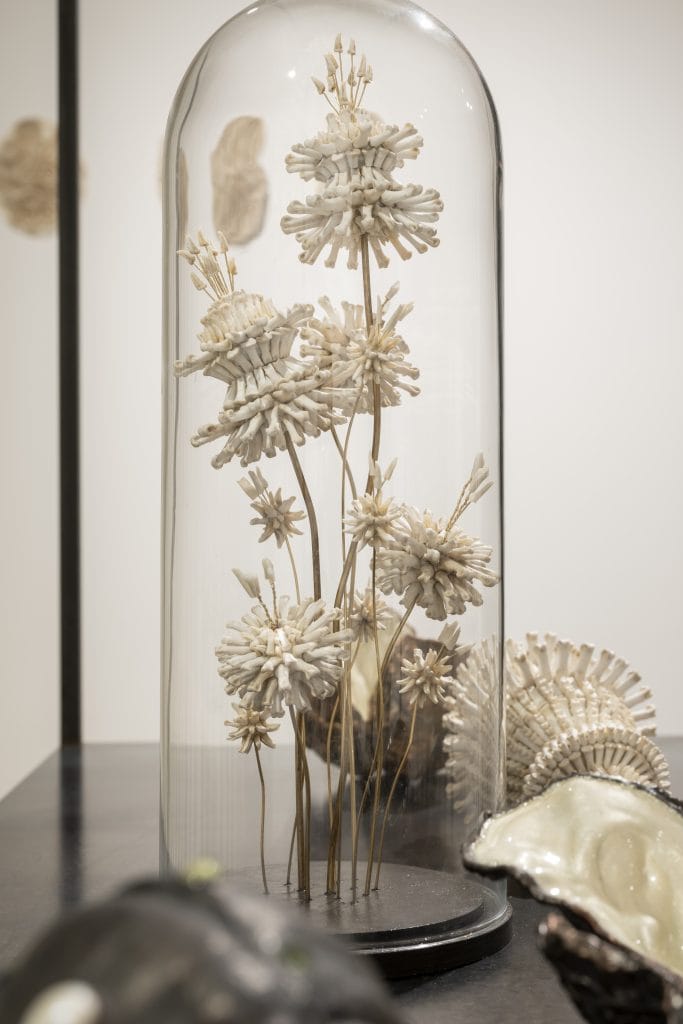

Emma tell me more about the Bones and Found Objects.
Emma Witter: Bone has always been my starting point—it’s the core material that led me to everything else. I began by collecting bones from restaurant waste, cleaning and assembling them like tiny architectural forms. From there, I started adding other found objects, pearls, shells, beads. Eventually copper became a way to unify and elevate those elements. It’s both a contrast and a connector. It gilds the fragile, encases the ephemeral. There’s a dialogue between the organic and the refined that I find endlessly compelling.
Copper.
Emma Witter: Copper has this incredible alchemical quality. It’s ancient, part of the earths crust. I love the contrast of using it in such a contemporary practice of electroforming. I love how it carries heat, how it patinas, how it records time. It’s a warm metal, almost skin-like. It balances the bone and organic matter—it brings structure, a kind of nobility.
There’s something healing in it too, historically speaking, and that resonates with the emotional and physical mending in my work. I like the idea of the small copper objects as talismans and carriers – to be touched, and wished upon. Copper is historically renowned for its conductivity, and used in spirituality as a medium to hold when you are manifesting.
The metal is antimicrobial, so even to have copper in the room is cleansing for the air and your environment. Ancient people knew to drink from copper cups to cleanse and mineralise their water.
Tactility is very important, especially in this disconnected and mass digital time. I want the works to be grounding and soothing on a variety of sensory levels.
What themes have you explored through Souter’s poem for your exhibition pieces, Emma?
Emma Witter: Venus, as a symbol, has always been rich territory. She embodies beauty, fertility, desire—but also mystery and power. In ancient times, Venus was the morning star, the evening star—a celestial body constantly transforming, appearing and disappearing. I love the idea that she has this duality: soft and fierce, sensual and divine. That energy, that mythic femininity, is something I tried to bring into The Moon’s Daughter is a Pearl. There’s a sense of ritual, of reverence, of otherworldliness.The symbol for femininity ♀ originates from ancient Roman and Greek iconography. It represents the goddess Venus, associated with love and beauty. In alchemy, it also stood for copper, a metal linked toVenus due to its lustrous appearance. Astronomically, the symbol was used to denote the planet Venus. Over time, it became widely adopted as the symbol for female in biology and gender studies.
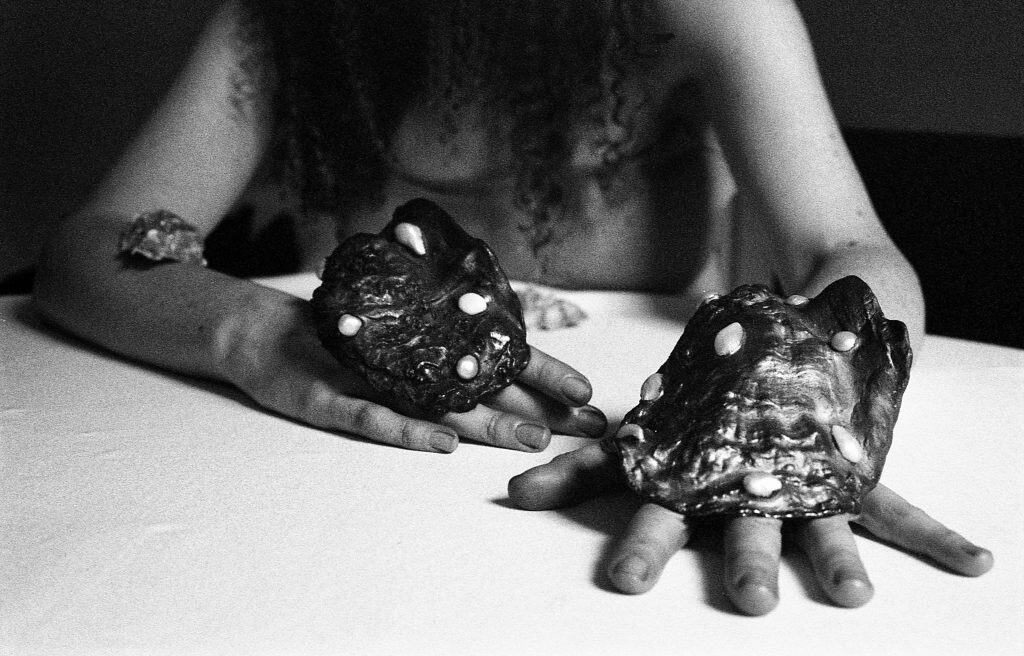
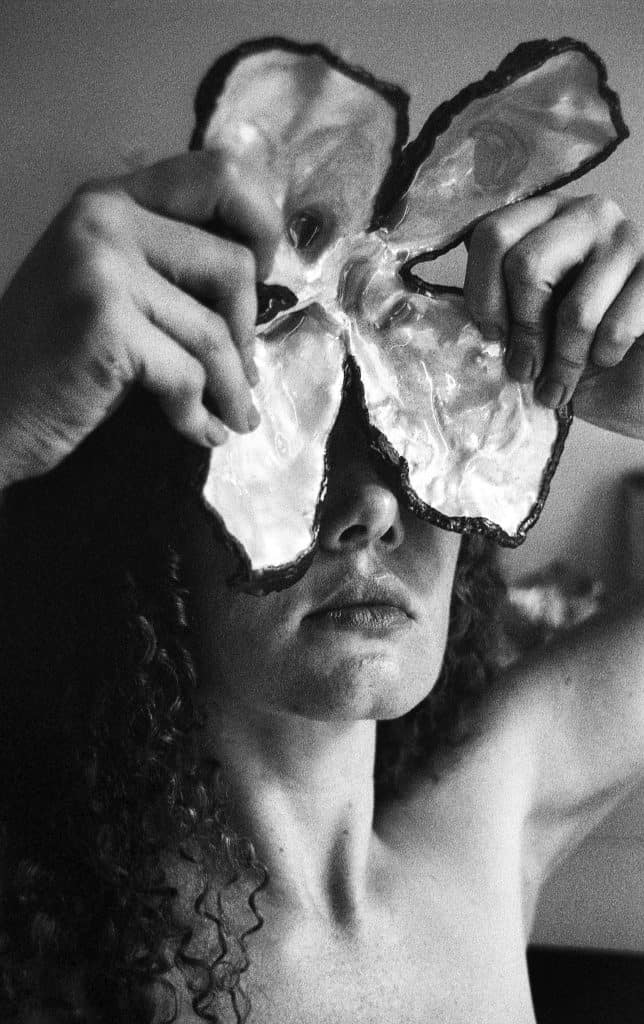
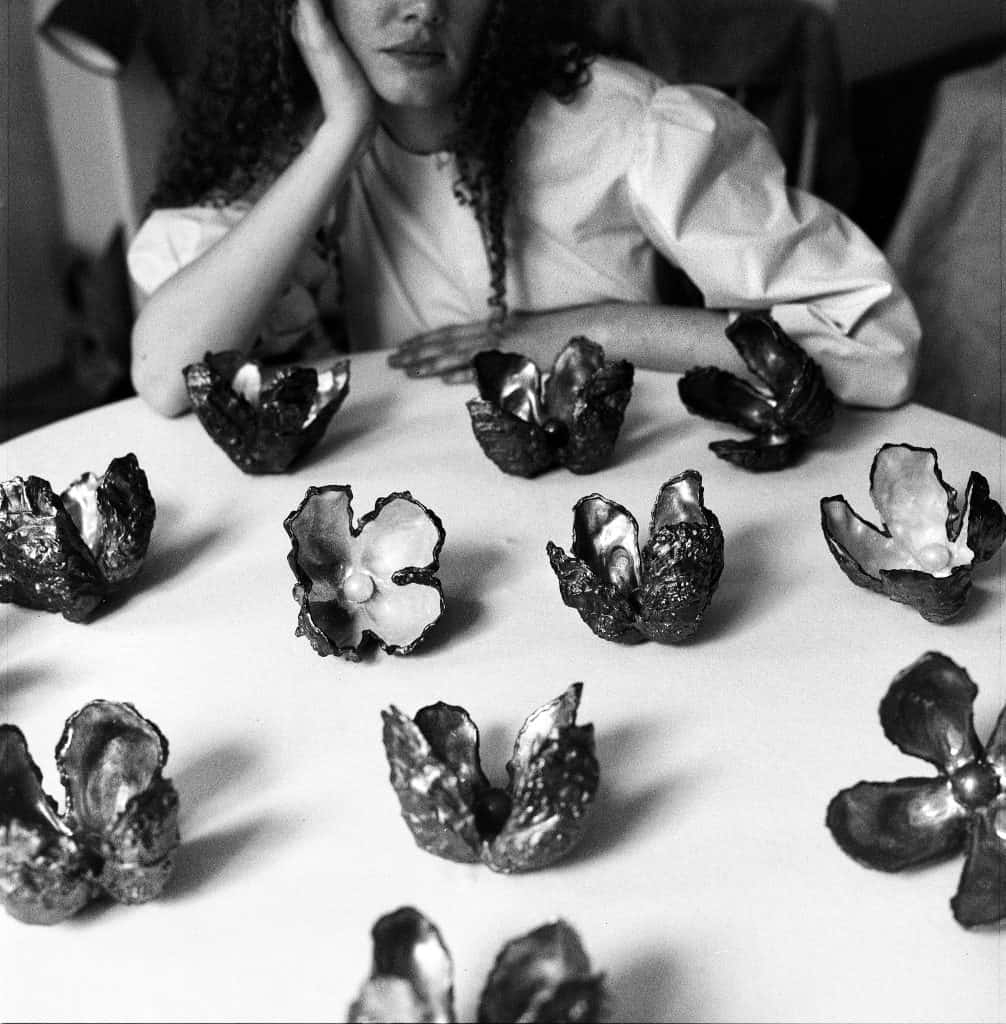
How important is community collaboration for you, Emma Witter?
Emma Witter: Collaboration is essential to my practice. Whether it’s working with a friend who’s a welder. Visiting antiques dealers regularly who keep an eye out for certain things for me. A butcher who saves me certain bones when I am working on a particular piece, I am so enriched by those exchanges. The final sculptures carry traces of those relationships. There’s a quiet joy in making something together, in shared creation. It makes the work feel alive, and rooted in a larger community.
Tell me about the space I believe you chose at Gallery FUMI?
Emma Witter: The smaller downstairs space at Fumi was always my favourite – it feels like a treasure box and calm little oasis in the centre of the busy city. It has a subterranean, womb-like energy—quiet, sacred. I leaned into that and treated it almost like a shrine or altar. We wanted a temperature change from the warm maximalism of the group show upstairs and to feel like you’re entering a contemporary grotto. I wanted people to step out of their hectic days for a few moments and into something a little bit spellbound.
Where would you like your work to progress?
Emma Witter: I’d really love the opportunity to scale up, and working in the same format of collectingand repurposing drifting materials – invite more of my community to engage with the activity, and build something together over time. The meaning is in the action and the being – togetherness. Making and Craft have potent powers of spiritual healing, mending and togetherness and I think there’s a lot of potential for channelling this for good.
The Moon’s Daughter is a Pearl by Emma Witter
Gallery FUMI
2-3 Hay Hill, Mayfair, London W1J 6AS
Images Courtesy of Sara Cuce for Gallery FUMI.
Emma Witter website
Share this post
Anji Connell is an internationally recognised interior architect, garden designer and self-proclaimed nomad. Known for her fabulous persona and her even more exquisite taste in all things design. She regularly writes for a variety of International titles on subjects such as art, design, lifestyle and travel from her globe-trotting adventures.
She divides her time between London, Hong Kong and South Africa.
Read Next

